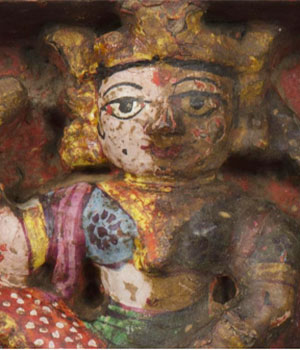It took more than a year, but conservators at the Nelson-Atkins Museum of Art have carefully stripped away layers of grime to reveal an elaborately-carved Indian shrine.
Now the shrine has been reassembled and is about to go on display for the first time in Kansas City.
The Nelson-Atkins actually acquired the shrine in 1932, even before the museum opened, but its been in storage ever since.
The shrine was created for the practice of Jainism, an ancient religion from India whose followers practice non-violent behaviors as a way toward individual perfection. Their ultimate goal is liberation from rebirth. A liberated individual who serves as an exemplar is known as a Jina (victor) orTirthankara (one who makes a path for others).
Here’s more from the museum:
“The museum’s original records described the piece as an Indian pulpit, so when it was purchased we didn’t entirely recognize its significance,” said Kimberly Masteller, the Jeanne McCray Beals Curator of South and Southeast Asian Art, who joined the Nelson-Atkins in 2008. “This is an outstanding example of a domestic Jain shrine and one of only seven known in U.S. collections.”
A team of conservators led by Kate Garland dedicated their time over the past year cleaning and reassembling the shrine’s columns, doors, lintel, jambs and a portico that once served as the entrance to an urban or domestic Indian shrine.
“We used solvent gels and thousands of swabs to slowly expose a few inches at a time,” said Garland. “It was very exciting to see this brilliant piece of art revealed, bit by bit.”
Using sophisticated tests such as carbon dating, scanning electron microscopy, and Raman spectroscopy, the conservators discovered that the shrine dates to the 16th century and was repainted sometime after 1814. Analytical work for the shrine was supported by the Andrew W. Mellon Foundation.
Jain practice requires daily veneration of an image of the Jina, either at a community temple or at a home shrine. It was common for wealthy Jains in western India to commission elaborate ghar derasars (house temples) for private use. These domestic shrines were frequently constructed in wood and decorated with paint and relief carvings. Like the one in the Nelson-Atkins collection, they also usually used key elements of temple architecture in their design.




Who’s talking